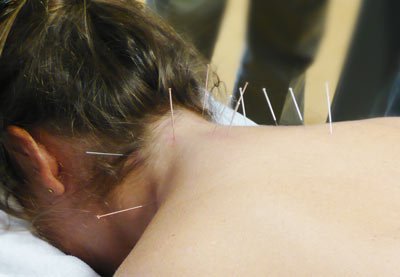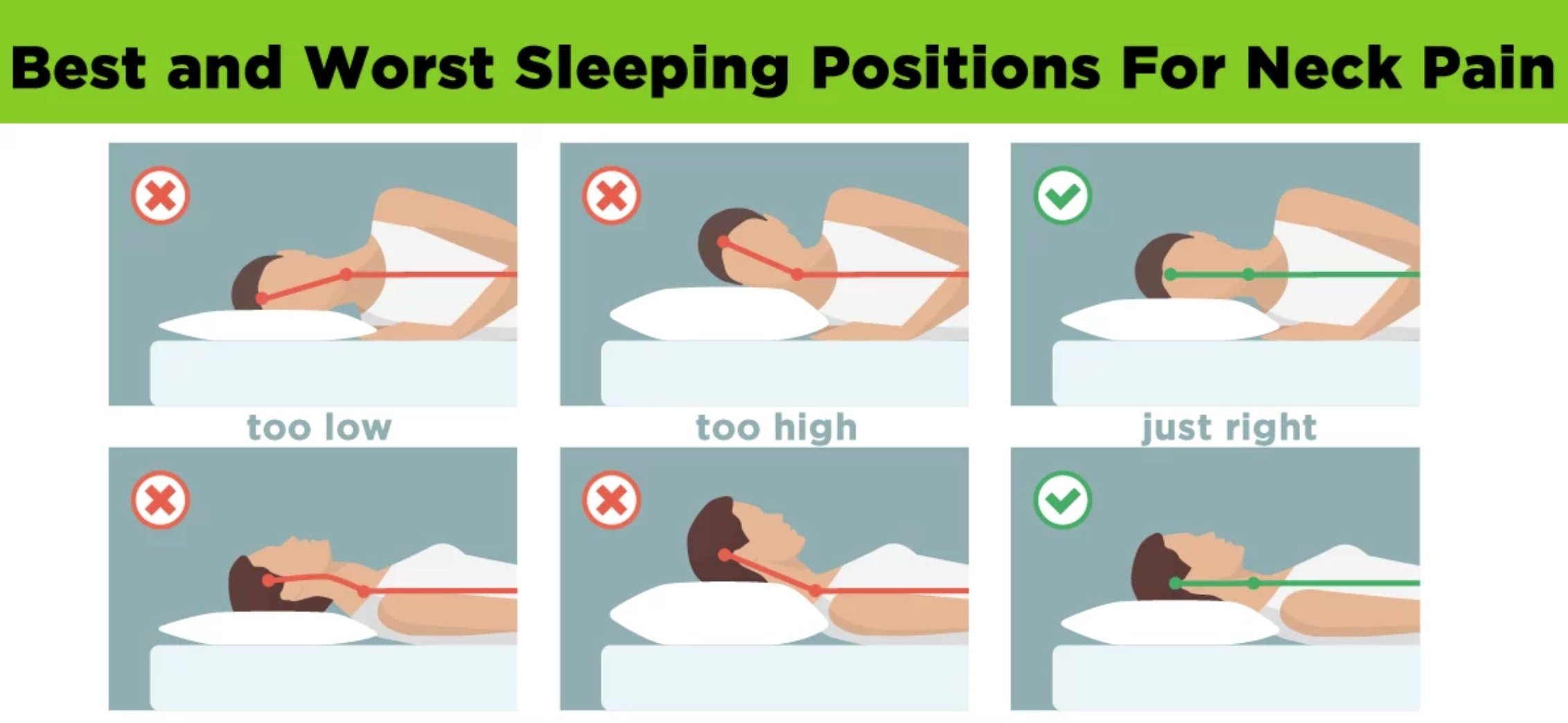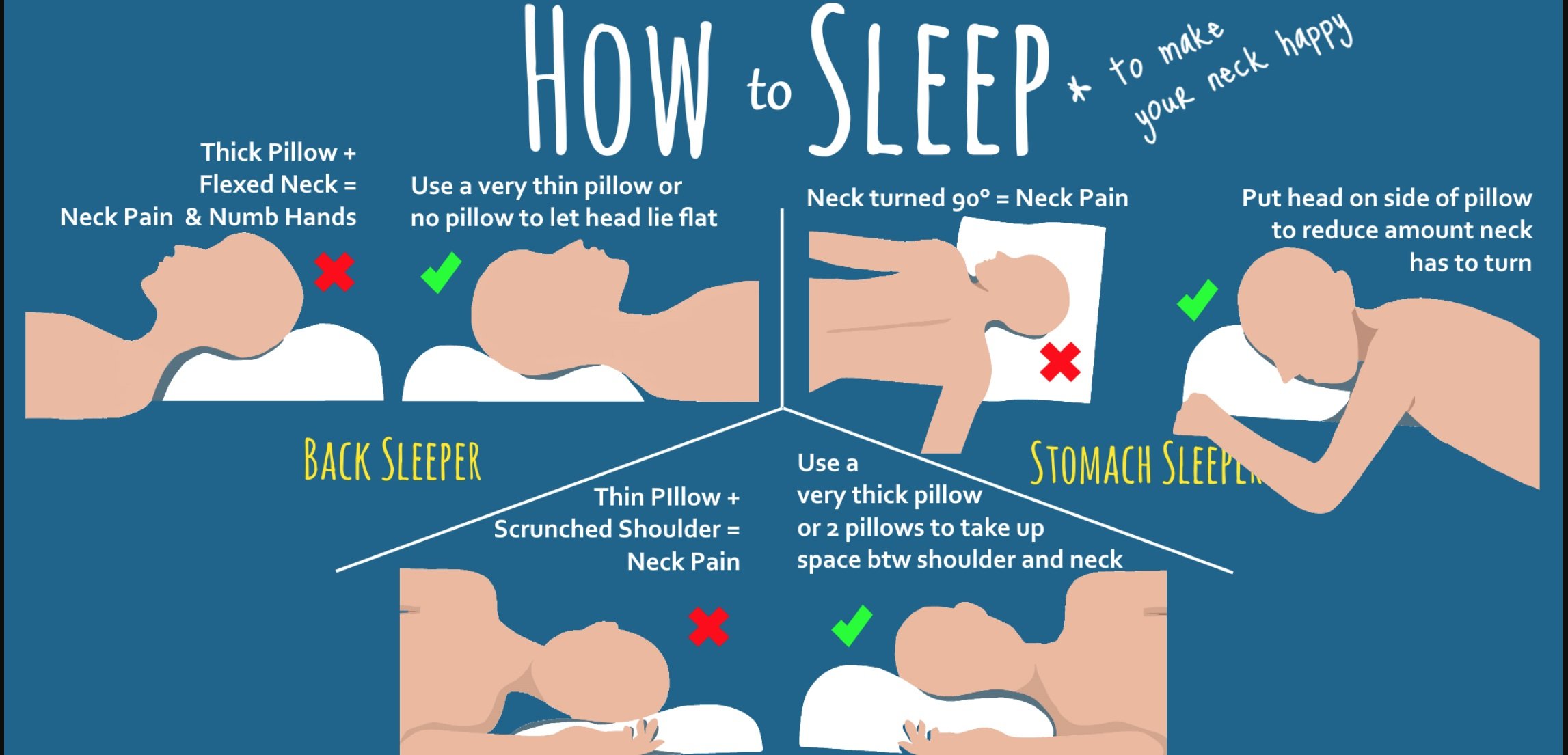
Neck Pain
Contents
Causes and Treatment Options
Over the last few years, the prevalence of neck pain has increased significantly. There are some studies that have suggested as much as 21.3% of the population experiences an episode of neck pain during any given year, and up to 86.8% of the population has experienced neck pain at some point in their life.
While it has been found that women are more likely to experience neck pain than men, and those who fall between the ages of 35 and 49 are at the highest risk, anyone can suffer from these symptoms.
Understanding the potential causes and what treatment protocols are available is important. This type of knowledge can help you act accordingly should you experience neck pain.
Causes of Neck Pain
Neck pain can be caused by either an acute injury or a chronic condition. Sleeping in the wrong position, for example, is an acute mechanical cause of neck pain. This would usually result in a muscle strain or joint sprain, which can cause neck pain for a day or so. Sometimes the pain may be present for more than a day, but it should get better in a relatively short period of time.
There are cases, however, where a larger issue may be at play. For example, when cervical osteoarthritis develops, it can cause chronic pain in the neck.
Understanding the potential causes of acute and chronic neck pain is crucial in order to determine whether your neck pain will go away on its own, or if you need further assessment and treatment.
When it comes to muscle strains and joint sprains that result in neck pain, the most common causes are:
Unhealthy sleeping habits, which may include stomach sleeping, or even something as simple as sleeping on the wrong pillow.
Having a poor posture due to computer usage or staring down on your phone/iPad.
Having been involved in a sport-related injury in the past or a car accident, which could have caused whiplash.
Neck pain can also be accompanied by a cervical headache (or cervicogenic headache). This can cause symptoms such as dizziness, light-headedness, and even nausea in some cases.
Chronic Neck Pain
Neck pain is categorised as chronic when it lasts longer than 3 months. There are several conditions that are known to contribute to chronic neck pain and it is important to have this accurately diagnosed by your chiropractor. These conditions include:
Degenerative disc disease
Spinal stenosis
Foraminal stenosis
Herniated disc
Osteoarthritis
Fibromyalgia
Spondylolisthesis
Other Causes of Neck Pain
Neck pain can also be the result of other life factors. Many people do not realize that factors like dehydration and even emotional stress can contribute to their neck pain.
Dehydration is a common cause of neck pain and headaches. Dehydration can often happen unknowingly with exercise, or being in the sun all day.
Emotional and mental stress is often overlooked as common causes of neck pain and headaches. When under stressful conditions, our body enters a ‘fight or flight’ mode, where our neck muscles become engaged to assist with breathing. In normal circumstances, our neck muscles should have minimal involvement when it comes to breathing. Consequently, as we become more stressed and the neck muscles become tighter, we start to experience more neck pain and tension, which may eventually build up into a headache.
What Causes Neck Pain and Shoulder Pain
Neck pain can also present together with shoulder pain. There are particular types of injuries to the neck that may cause the pain to radiate down to the shoulders, affecting a larger area of the body and is generally more concerning.
Cervical radiculopathy is the most common issue to be noted here. There are nerves that exit from the vertebrae in our neck. When these nerves become irritated or compressed, they can cause pain, pins and needles, or even weakness in the shoulders, arms, and down to the hands. If this occurs, this requires a proper physical assessment by a chiropractor.
Heat therapy and traction is great for cervical radiculopathy. If the condition does not improve, it is highly recommended to have this assessed in a timely manner because long-standing irritation to nerves can reduce your chances of making a full recovery.
Other potential issues that may lead to neck pain that radiates to the shoulders include ‘text neck’ and sitting in front of a computer with poor posture for prolonged periods of time. For more on this, please read our article on ‘Neck Pain from Computer Work and Mobile Phone’.
Treatment Options for Neck Pain
Surgery for neck pain is an absolute last resort as it poses significant risk and does not always resolve your symptoms. This is why many patients opt to begin with chiropractic treatment and exercises to help them get rid of their neck pain before considering surgery.
For relief in neck pain, chiropractic is one of the most sought-after treatments for fast pain relief. A chiropractor can help improve your neck pain symptoms in several ways.
A postural assessment is a critical starting point with chiropractic. This can help a person understand how their posture is currently affecting their neck and shoulders. Advice and recommendations can be provided to the person to help them make appropriate modifications to minimize the effects that their posture has on their neck..
Some general treatments include:
Stretching the muscles in the shoulder and neck can help promote healing and can also yield a reduction in existing pain.
Stiffness in the neck can be targeted through mobilization and adjustment techniques, which will certainly help to restore a better range of motion – not only in the neck but also through the shoulders.
Soft tissue massage helps to promote further relaxation of the muscles that may be contributing to neck stiffness.
Dry needling is another option to be considered. Acupuncture needles are placed at specific muscles in the body to reduce stiffness in the muscle and provide relief of accompanying symptoms.
A workplace assessment is also beneficial for those that spend most of their day in front of a computer. This can help a person identify potential issues in their desk setup that might be aggravating their symptoms.
Prescription pain relief medication can help with short-term pain relief but rarely solves any chronic conditions. In some cases, a steroid injection in the cervical facets can also help to provide an effective reduction in the severity of the neck pain.
In recent times, chiropractic care has become one of the most popular options. This is largely due to the fact that recent studies have shown manual manipulation in combination with dry needling, soft tissue techniques, and at-home exercises produce some of the best results.
At-Home Treatment for Neck Pain
Neck pain can sometimes benefit from a self-care remedy and does not always require professional assistance. It does, of course, depend on the severity of the condition.
If you have tried to get rid of the neck pain, whether it may be caused by nerve pain or neck strain, and the symptoms do not get better, it is advisable to see a sports chiropractor who can provide a physical examination and recommendations on more appropriate treatments.
Heat and ice therapy are often recommended. While this will not cure neck pain, it may help to ease the symptoms. Ice therapy can help to relieve the pain by blocking the pain receptors. Heat therapy, on the other hand, can help to reduce stiffness and inflammation, primarily through improving blood circulation in the area.
Rest is also important, as putting even more strain through activities on the neck can worsen the symptoms. This is especially important following a strain. To fix the issue, it is crucial to allow the structures in the neck some time to heal.
Other effective self-care strategies that can be helpful include:
Practicing better posture habits. Sitting up straight in a chair and getting a computer monitor in a position that does not cause a constant downward position of the head is a good starting point.
Massage can also be useful. Many people find that massage is useful for both acute and chronic neck pain conditions.
Below are a set of simple neck stretches that can also help relieve neck tension and pain.
Neck Pain from Sleeping
Our bodies thrive on sleep in order for us to function optimally as well as for tissues to heal. The wrong sleeping position, or even an inappropriate mattress, can cause a number of potential complications such as neck pain.
Neck pain from sleeping is often the result of sleeping in the wrong position, or perhaps even using a mattress or pillow that is not right for your body size or your personal sleep position (e.g. back sleep vs side sleeper).
For back sleepers, it is ideal to sleep on a thinner pillow in comparison to a side sleeper, where you may need a thicker pillow. The exact pillow thickness can vary from person-to-person so it is best to get fitted for a pillow by your chiropractor.
For stomach sleepers, you need to stop sleeping on your stomach! There is simply no way for your neck to stay in good alignment because your neck has to turn one way while sleeping on your stomach.
There are different ways that sleeping can cause neck pain to develop. Laying at an awkward angle with the neck and head out of proper alignment is a relatively common cause (ie. sleeping on your stomach). A sudden reaction at night while sleeping, such as when having a weird dream, can also cause certain structures of the neck to strain.
In most cases, a muscle strain is why a person would experience neck pain from sleeping.
How to Sleep with Neck Pain and Stiffness
If you’re already suffering from neck pain or stiffness, you need to pay extra attention to how you sleep to make sure you don’t further exacerbate the injury. Sleeping in a well-supported position is the difference between improving your symptoms, or making them worse.
If a person sleeps on their stomach, they may be at a higher risk of neck pain. When we sleep on our stomach, the neck has be turned to one side for a prolonged period of time. Unfortunately, this prolonged stretch strains the muscles and ligaments and is often the culprit of wry neck.
The best position is to sleep on your back to prevent further irritation to an existing neck injury, and can also help you avoid waking up with a stiff neck. However, sleeping on your side is also acceptable given you have the proper support from your pillow.
Choosing the right pillow is another critical factor. However, there is no ‘one size fits all’ when it comes to picking the right pillow. Some people may find that a firm pillow helps them sleep better, while others enjoy the comfort of a down pillow that offers more cushioning.
Back sleepers should ideally sleep on a thinner pillow in comparison to a side sleeper, where a thicker pillow is recommended. The exact pillow thickness can vary from person-to-person based on their size.
Thus It is advisable to be fitted for a pillow by your chiropractor, much the same way you would get fitted for shoes.
Neck Pain from Computer Work and Mobile Phones
Neck pain after computer work or staring at mobile phones is largely due to prolonged strain on the muscles and joints in the back of the neck.
People who do not practice good posture habits are at a significantly higher risk of developing neck pain. Poor posture is something that affects many people today – and technology is largely to blame for this issue.
Heading to the office often means sitting in front of a computer all day long. This means a slouched position, with your head stooped forwards for countless hours. This is called ‘forward head carriage’ and one of the most common bad postural findings we see with office workers. However, computers are not the only culprits behind this issue.
Neck pain from staring at your phone is another important issue that should be noted. Millions of people own a smartphone and this is slowly affecting the younger generations as well. In fact, neck pain due to mobile phone usage has become so common that doctors are now referring to this as "text neck."
When we sit up properly in good posture, our head sits on top of our shoulders and the weight of our head can transfer directly down through the rest of our spine. This is a good thing because this is what our spine was designed for!
However, when we sit slouched for prolonged periods of time or stare down at our phones, our neck muscles have to work tremendously hard to hold our head up. Unfortunately this is NOT what our neck was designed for so eventually the neck muscles and joints become fatigued and irritated, thus leading to pain.
To put this into perspective, the average head weighs around 10 pounds but when your head drops to stare down at your phone, that suddenly becomes 60 pounds of force on your neck. So effectively, you are making your neck work 6 times harder due to poor posture!
For this reason, it is important to learn how to sit at a computer properly to avoid neck pain. The same goes for being mindful of how long you’ve been staring at your phone to avoid causing significant strain on the neck.
For those stuck at a desk, making sure your monitor is at the height of your eyes is one of the most crucial strategies for preventing neck pain.
Car Accidents and Whiplash Injuries
Each day, up to 140,000 people are injured in a car accident. Most often, these injuries are not serious enough to put a person’s life in danger or require hospitalization. This, however, does not mean complications will not develop. Whiplash is a relatively common type of injury that can occur during a car accident.
Studies have shown that an estimated 37.7% of people involved in a car accident will suffer whiplash injuries as a complication.
Read more about Neck Pain…
What Causes Neck Pain After A Car Accident
Whiplash is the most common cause of neck pain that a person may experience following a car accident. This type of injury occurs when a sudden jerking motion is experienced in their head, where the head would quickly move forward and then snap backward.
Unfortunately, whiplash often results in damage to the structures in the neck. These structures may include:
Ligaments
Nerves
Cervical muscles
Intervertebral joints
Discs
Fractured vertebrae
How to Treat Neck Pain After A Car Accident
There are different types of treatment options suggested for whiplash. The treatment that would work best for a specific person depends on the structures that were injured and the severity of the injury.
As such, the first step is to have this properly assessed. A chiropractor can provide a diagnosis as to what structures have been injured. In some cases, x-rays may be necessary to rule out any damage to the vertebrae.
In most whiplash cases, soft tissue work is required to help relax the muscles that are guarding as a result of the injury. This might include massage therapy, dry needling, or various other soft tissue techniques.
Gentle mobilisations and manipulations may also be required to help restore mobility to the neck. There are also accompanying at-home stretches and exercises that will help speed up the healing process.







